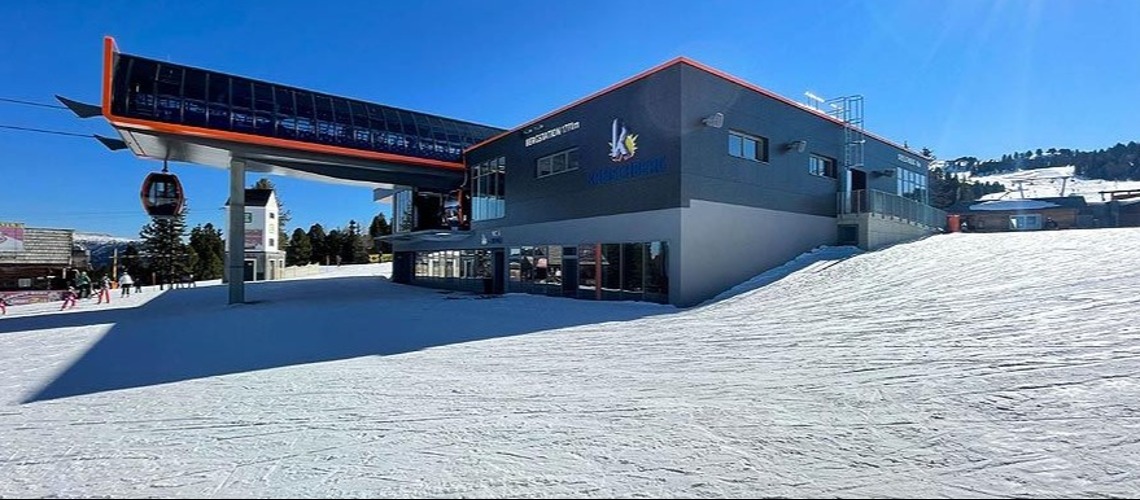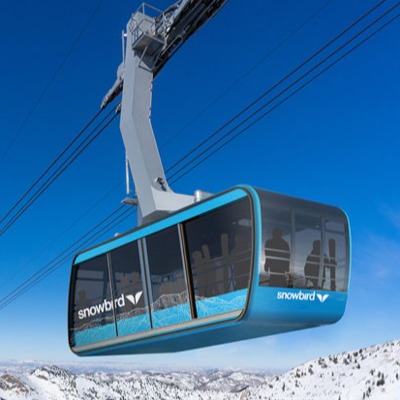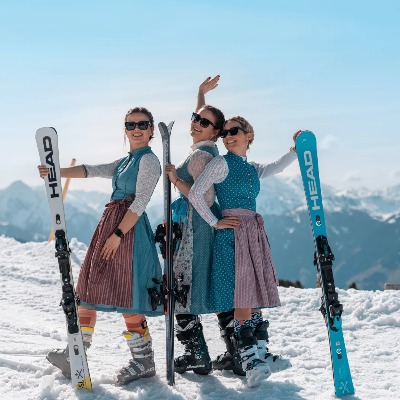Kreischberg: New 10-Seater Gondola Designed By Hoyer Brandschutz

The Styrian winter sports region of Kreischberg made the largest investment in its history in 2021 at around 40 million euros: the 6-seater gondola built in 1992 was converted into a 10-seater gondola with three multifunctional station buildings in just 270 days. 4,000 people, twice as many as before, can now conquer the mountain from the valley with the new "Kreischberg 10er" per hour. On behalf of the Murau office plan-ed, Hoyer Brandschutz took over the fire protection planning for the large-scale Alpine project and focused on one thing: protecting the cable, the lifeline of the system, which thousands of people rely on every day in winter.
There were just 270 days between the last day of operation of the 6-seater gondola and the commissioning of the "Kreischberg 10" on November 26, 2021. During this time, the valley, middle and mountain stations were expanded and modernized, the cable car supports were replaced by 30 new ones and 181 gondolas were lifted onto the newly installed cable. The construction project was implemented by the Murau general planning office plan-ed: “With such an infrastructure project, many factors have to be taken into account that do not exist elsewhere. Cable car planning is therefore often in the hands of less specialized companies," explains Edwin Galler, Managing Director of plan-ed. "Although we are not pure ropeway planners and the implementation time was very short, all the wishes of the client and the requirements of the authorities were fully implemented. That meant green light
The engineering office Hoyer Brandschutz designed the fire protection measures for this. “These play a major role in ropeways because we are dealing with complex technical structures. The company buildings have long since left the status of the 'little lift house' behind, but are ultra-modern buildings with many uses," says Managing Director Werner Hoyer-Weber. This becomes clear in the valley station: The three-storey building combines the ticket office and departure hall, offices, sales areas, ski depots, catering and event areas as well as storage and technical rooms. In order to separate the uses from one another in terms of fire protection, Hoyer Brandschutz divided the valley station into 28 fire compartments. Depending on the fire loads and risk of fire, they are to be covered with various structural,
In addition to the conversions at the valley, middle and mountain stations, the protection of the 3.8-kilometer cable was the focus of fire protection planning. The cable car law stipulates a protective distance or a construction ban of 12 meters to the cable. In order to prevent the rope from being endangered beyond this legal requirement, Hoyer Brandschutz also considered buildings with a distance of 20 meters to the outer strand of the rope. “The development in a touristically developed area like the Kreischberg should not be underestimated. Ultimately, we analyzed an area of several hectares to see which buildings could pose a threat to the cable,” says Hoyer-Weber. These buildings - whether inn, wooden hut or hay barn - were provided with additional fire protection measures. In the case of the former snow groomer garage, for example, the wooden cladding was replaced with fire protection panels. In addition, the building was connected to the middle station's fire alarm system.
This large-scale view bans the risk of a fire starting and spreading in and around the cable car system. As a further protective measure, this was carried out in the so-called “fire mode”. Safety functions such as standstill or reduced speed, which are useful in normal operation, are deliberately overridden. This operating mode is only activated manually by the operations management in the event of a fire and enables the gondolas to be returned to the stations as quickly as possible. In the case of the "Kreischberg 10er", all passengers in the 181 gondolas are safe within 10-15 minutes in the nearest station building in the event of a fire alarm.
Speaking of 10-15 minutes: Normally, the fire brigade is on the spot within this period of time. While this also applies to the valley station, where the fire-fighting attack is possible at any time of the year, emergency services only reach the mountain station at 1,771 meters after a long journey in summer and not at all in winter. This results in increased requirements for structural fire protection, but a rethink was also required in the organizational area. The concept of Hoyer Brandschutz envisages that the staff of the mountain station are trained in the first and extended extinguishing aid. Fire hydrants, which are supplied with extinguishing water via frost-proof snow lines, enable a quick reaction. In addition, the mountain station, like the valley and middle stations, is equipped with an automatic fire alarm system. triggers them
The Viennese engineering office around managing director Werner Hoyer-Weber develops complete solutions for fire prevention in industrial and commercial buildings. In addition to fire protection concepts and the planning of fire protection systems, in particular extinguishing systems, Hoyer Brandschutz also takes over construction supervision, expert work and is an authorized body for the acceptance of extinguishing systems. Clients and architectural offices are supported in designing economical fire protection measures. Companies such as VAMED, IKEA, Coca-Cola, Magna Steyr, OMV, Boehringer Ingelheim, the Salzburg State Clinics, Wien Energie, AGRANA and Saubermacher already rely on the expertise of Hoyer Brandschutz













